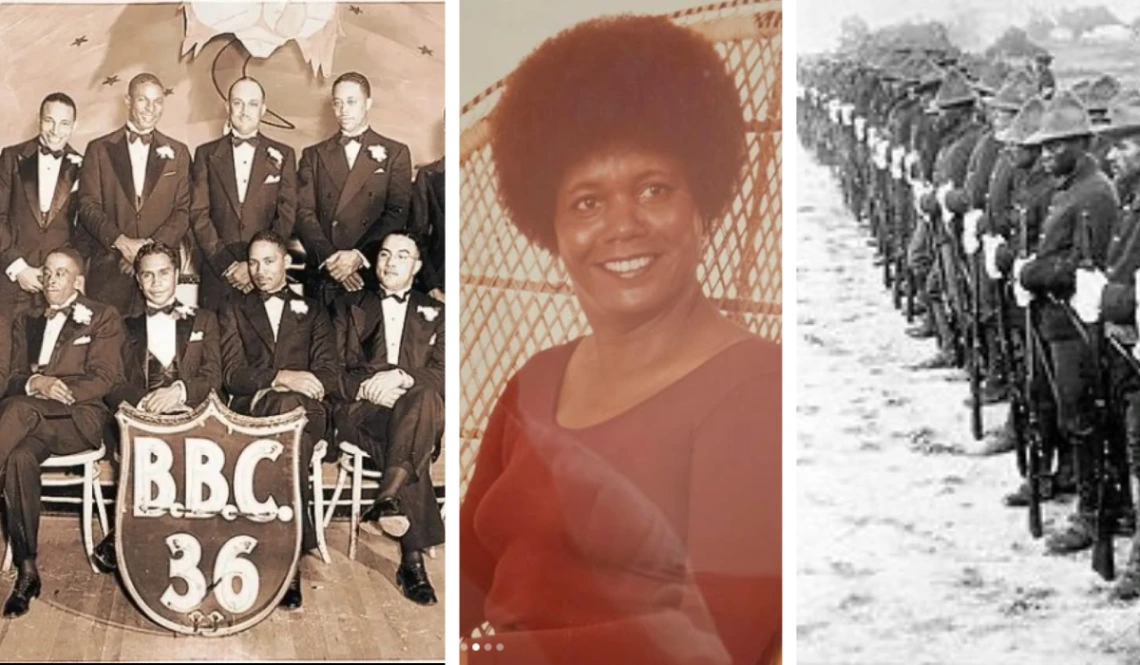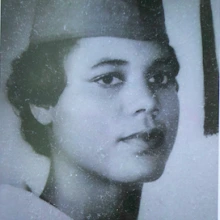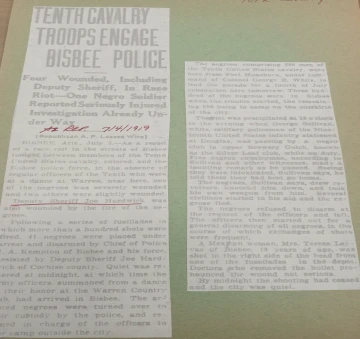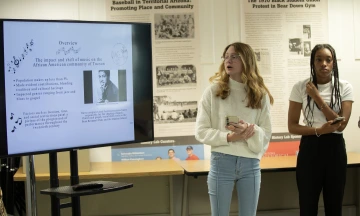History Class Collaborates with AAMSAZ to Develop Exhibits Highlighting Tucson’s African American Heritage

From left to right, Tucson's Beau Brummel Club, Doris J. Thompson, and Buffalo Soldiers 10th Cavalry.
(Credit: Beau Brummel Club, City of Tucson Instagram, Wikipedia)
During the fall 2024 semester, undergraduate students in Professor Katherine Morrissey’s class, Tucson Matters: Making History with Community Museums, part of the Department of History in the College of Social and Behavioral Sciences, collaborated with the African American Museum of Southern Arizona, or AAMSAZ, to research and present ideas for potential exhibits, contributing to the museum’s future programming. The course examines power, privilege, and marginalization through collaboration with Tucson-area museums and communities that highlight the experiences of historically excluded or marginalized groups.
The final experiential learning assignment culminated in a public presentation of student's projects, which included topics such as "Who Was Mansfield? The Sugar Hill Neighborhood Renaming Project," “The Transition Era: The Buffalo Soldiers ‘Preserving Neutrality’ in Southern Arizona,” and “African American Soul Told Through the Sounds of Tucson: Twentieth Century Music in Tucson.”
"Who Was Mansfield? The Sugar Hill Neighborhood Renaming Project"
For the group of students who focused their project on the campaign to rename a local city park, Beverely Elliott, executive director of the African American Museum of Southern Arizona, connected them with Harvey Thompson, son of the woman behind the Sugar Hill Neighborhood Association's campaign to change the park's name. They learned about his mother’s legacy, wrote letters of support, and discussed the park’s original namesake, Mr. Mansfield, who engaged in discriminatory 'redlining' real estate practices. On Jan. 22, 2025, Tucson Mayor Regina Romero and the City Council voted to approve renaming Mansfield Park to Doris J. Thompson Park.

Doris J. Thompson
The decision honors Thompson’s significant contributions to the Sugar Hill Neighborhood, particularly her advocacy in establishing the original recreation center at the park, the Northwest Center, now the Donna R. Liggins Center, according to the City of Tucson website.
"We were honored to collaborate with Dr. Morrissey and her class on a project that allowed the AAMSAZ to highlight history in a meaningful, community-driven way. This course provided an opportunity for students to actively engage with both the museum and the local community, making history come alive through hands-on projects," Elliott said.
"This project underscored the evolving role of museums. We are not just custodians of the past but active institutions that engage with society both historically and in the present," Elliott said. "At AAMSAZ, our motto is 'We are a movement, not just a museum.' This project truly exemplified that vision, demonstrating how the museum can be a catalyst for change with the help of the students' passion and dedication."
“The Transition Era: The Buffalo Soldiers ‘Preserving Neutrality’ in Southern Arizona"

Bisbee Riot news headline
Credit: Arizona Historical Society Library and Archives, Tucson, Arizona
Kay Becker's group examined the period from 1900 to 1920 — a time marked by goals of "preserving neutrality," evolving situations in Mexico and Europe, and racial tensions in the U.S. following World War I. Relying on artifacts, photographs, secondary sources, and oral histories for insight, the team focused on the era and the men involved, specifically the Buffalo Soldiers, the Punitive Expedition of 1916, Fort Huachuca, the Battle of Ambos Nogales, and the Bisbee Riot.
The Buffalo Soldiers, African American soldiers in the U.S. Army, played a crucial role in post-Civil War military service. In this pivotal time for the 10th Cavalry, they transitioned from colonial duties to a stationary role at Fort Huachuca, where they secured the U.S.-Mexico border during the Mexican Revolution and growing friction between the U.S. and Europe.
“I’m an exchange student from Germany, so for me, it was particularly interesting to focus on this time period and the events here in Arizona, since in my home country, we usually focus on the East Coast and Southern states when talking about African American and U.S. history,” Becker said. “This topic remains important today because, through analyzing the named events, we saw that these soldiers refused to back down in the face of inequality, injustice and racism and continued to fight."
“African American Soul Told Through the Sounds of Tucson: Twentieth Century Music in Tucson”
Naomi Heit's team chose music as the central focus for their exhibit presentation. Their project examined African American music in Tucson through three themes: local music venues, church influences, and the Dunbar School’s role in youth performances.

Lauren Hartwich (left) and Ziah Burks (right) present their project on “African American Soul Told Through the Sounds of Tucson: Twentieth Century Music in Tucson”
Mackenzie Virdee
The presentation highlighted venues like theaters, social clubs, and hotels that catered to African American audiences and hosted touring musicians. The project also explored how church choirs shaped the local music scene and broader cultural landscape. By tracing the evolution of entertainment from the 1900s onward, it showed how changes in venues and performers influenced music overall. The proposed exhibit draws on sources from Special Collections, the Arizona Historical Society’s Archives, the museum’s collections, and digital archives such as JSTOR.
“This project promoted a cultural understanding of African American history, with a focus on its connection to Tucson’s unique heritage,” Heit said. “It connected local narratives to the broader story of African American contributions on both a regional and national scale. It was truly eye-opening to see how much of Tucson’s history had been influenced by African Americans, which no one seemed to talk about.”
##

